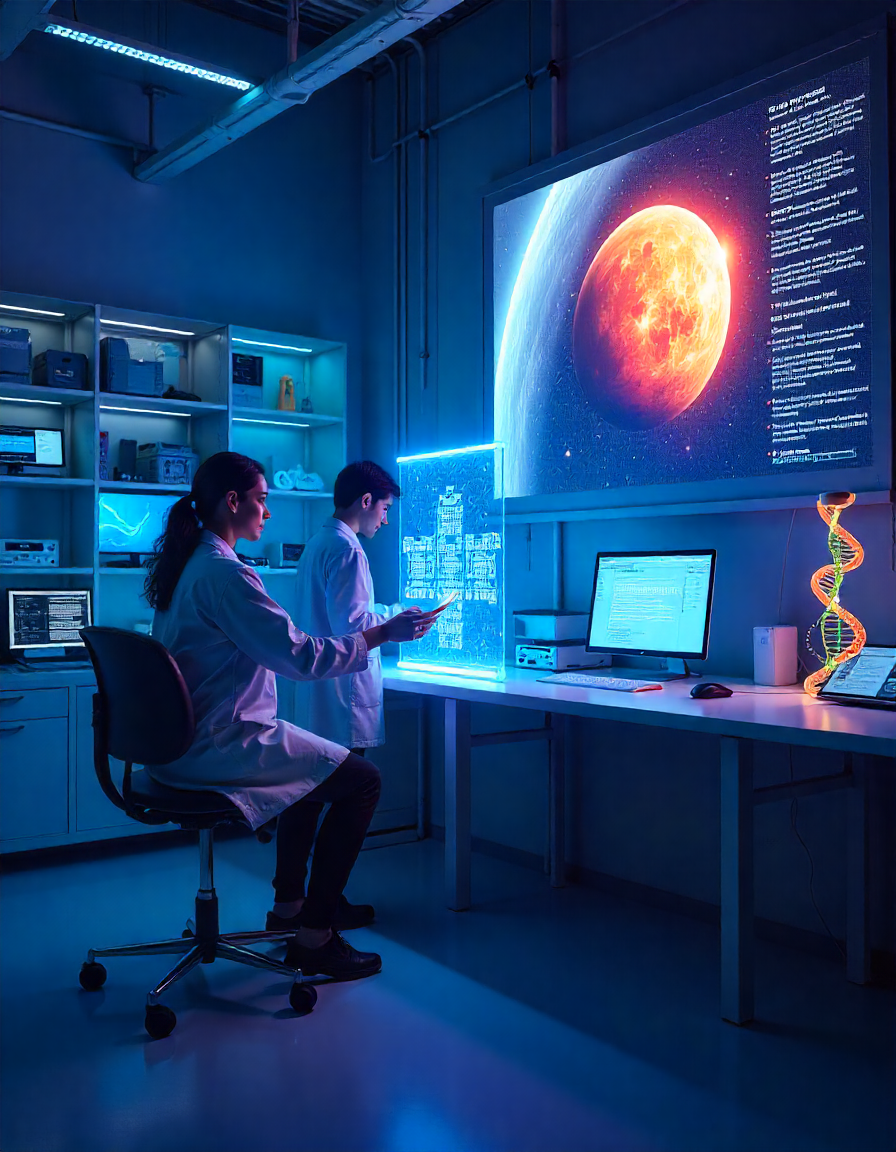When people hear the phrase “particle physics,” they often imagine sprawling laboratories with mile-long tunnels, whirring magnets, and beams of light bending in strange arcs. That image is not wrong, but it is only the surface of a field that tries to answer one of humanity’s oldest questions: What is the universe made of, and how does it work at the smallest scale?
For centuries, philosophers and scientists chipped away at that mystery. The ancient Greeks proposed that all matter consisted of tiny, indivisible units—atomos. Over two thousand years later, we now know those “indivisible” units are anything but simple. Atoms are composed of smaller constituents: protons, neutrons, and electrons. And even these particles hide deeper layers of structure.
The Standard Model: Our Current Best Map
The modern framework explaining the known building blocks of matter is called the Standard Model. It might not sound as romantic as “Theory of Everything,” but it is one of the most successful scientific theories ever constructed. The model classifies elementary particles into two main families:
-
Fermions – These are the “matter particles,” such as quarks (which form protons and neutrons) and leptons (such as electrons and neutrinos).
-
Bosons – These are the “force carriers,” like photons (light), gluons (which hold quarks together), and the W and Z bosons (responsible for the weak nuclear force).
In 2012, the detection of the Higgs boson confirmed the last missing piece of the Standard Model puzzle. This particle gives mass to other fundamental particles, preventing the universe from being an empty haze of massless energy.
Yet for all its accuracy, the Standard Model is incomplete. It leaves unanswered questions: Why does gravity, the most familiar force, not fit neatly into its equations? What is the nature of dark matter, which seems to outweigh visible matter in the cosmos by a factor of five? And what exactly causes the universe to be made mostly of matter rather than antimatter?
Beyond the Known
Physicists are not content to leave those questions hanging. Efforts to push beyond the Standard Model take many forms:
-
Supersymmetry (SUSY) proposes that every particle has a heavier “superpartner.” This could explain dark matter and unify forces at higher energies, though so far no superpartners have been detected.
-
String theory envisions the fundamental particles not as points, but as tiny vibrating strings. Its mathematics suggests the possibility of extra spatial dimensions curled up beyond our perception.
-
Quantum gravity research seeks to merge Einstein’s general relativity, which governs the large-scale structure of space-time, with quantum mechanics, which rules the microscopic world.
These theories are not simply philosophical curiosities—they produce predictions that guide experiments.
The Machines That Probe the Invisible
Studying the smallest scales requires enormous machines. The Large Hadron Collider (LHC) near Geneva is the largest and most powerful particle accelerator ever built. It uses superconducting magnets to steer and smash protons together at near-light speeds, recreating conditions similar to those fractions of a second after the Big Bang.
Detectors surrounding the collision points—like ATLAS and CMS—are essentially high-speed cameras capable of recording events occurring in less than a billionth of a second. They sift through vast amounts of data to identify rare phenomena, like the decay patterns of exotic particles.
Other facilities, such as neutrino observatories buried deep underground or embedded in Antarctic ice, chase particles that can pass through entire planets without interaction. These experiments broaden our understanding of forces and particles that are harder to capture in collider experiments.
The Mystery of Neutrinos
If the LHC is the glamour of particle physics, neutrino research is its quiet detective work. Neutrinos are almost massless, electrically neutral, and unimaginably numerous—billions pass through your body every second without leaving a trace. Yet they may hold keys to cosmic mysteries.
One of the most intriguing puzzles is neutrino oscillation: neutrinos can change from one type (or “flavor”) to another as they travel. This implies they do have a tiny mass, a fact the Standard Model does not fully explain. Understanding this could help reveal why the universe contains more matter than antimatter, since neutrinos may have played a role in tipping that balance in the early cosmos.
From Particles to the Cosmos
The smallest scales of particle physics and the largest scales of cosmology are deeply connected. Processes that occurred within the first microseconds after the Big Bang determined the structure of the universe billions of years later. Studying particle interactions can therefore shed light on dark matter, dark energy, and even the fate of the cosmos itself.
For example, if a new particle is discovered that matches the properties expected of WIMPs (Weakly Interacting Massive Particles), it could solve the dark matter riddle in one stroke. Alternatively, confirming axions—hypothetical ultra-light particles—could open an entirely different chapter of physics.
Challenges in the Field
Particle physics is a domain where progress is measured in decades and billions of dollars. Building and operating colliders or deep-space detectors requires international cooperation, political will, and a willingness to invest in research whose benefits may be indirect but profound.
There are also theoretical tensions. Some hoped that new physics beyond the Standard Model would emerge quickly after the Higgs boson’s discovery. Instead, the LHC’s results have largely confirmed the Standard Model’s predictions, forcing physicists to rethink their assumptions.
Yet this “nothing unexpected” outcome is itself valuable. It tells researchers which avenues are dead ends, refining the map of what is possible.
The Human Element
Behind the high-energy collisions and dense mathematical papers are thousands of scientists, engineers, and technicians collaborating across borders. The scale of cooperation in particle physics rivals any human endeavor, from space exploration to global health initiatives.
A particle detector is not just a machine—it is the physical manifestation of decades of planning, design, and labor from specialists in electronics, cryogenics, materials science, computing, and more. Every collision recorded is the result of millions of coordinated decisions.
Why It Matters
For the everyday citizen, it might seem particle physics belongs to an abstract realm far removed from daily concerns. But history shows that fundamental research often leads to unforeseen applications. The World Wide Web was born at CERN to share physics data. Advances in superconducting magnets, particle detectors, and data analysis have filtered into medicine, industry, and computing.
Beyond tangible benefits, there is the cultural value: particle physics is part of humanity’s shared quest to understand existence itself. In peeling back the layers of reality, we are, in a sense, learning the universe’s own language.
Conclusion
Particle physics is not finished—it is only in an extended intermission between acts. We have a working model that explains much but leaves tantalizing gaps. The next decades may bring revolutions as profound as the discovery of the atom or the birth of quantum mechanics. Or they may deliver subtler insights that slowly shift our view of reality.
Either way, the pursuit is worth the effort. Because in seeking to know what the universe is made of, we are also seeking to know ourselves—creatures made of the very particles we study.

